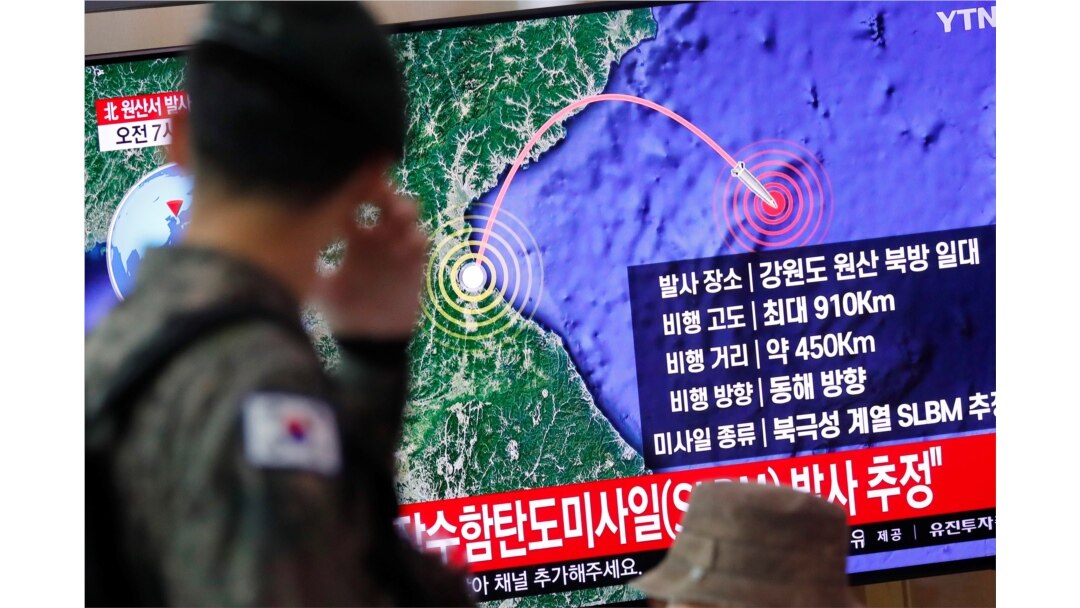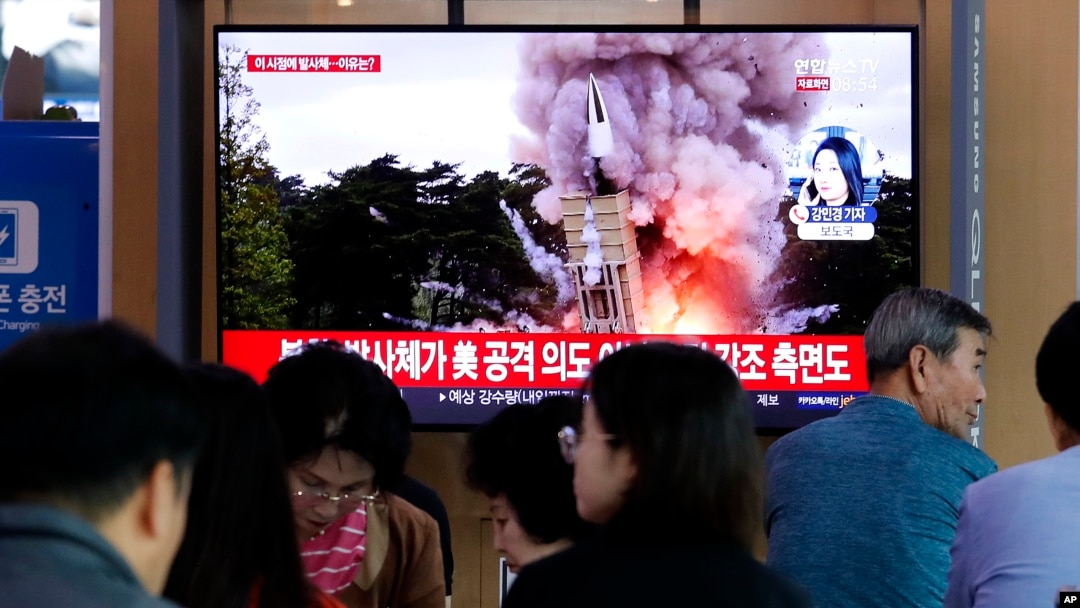North Korea on Wednesday tested a ballistic missile designed to be launched from a submarine — an important advancement in Pyongyang’s weapons program and a major provocation just days ahead of working-level nuclear talks with the United States.
The Korean Central News Agency on Thursday claimed a successful test of the “new-type” submarine-launched ballistic missile, or SLBM, which it dubbed “Pukguksong-3.” KCNA pictures showed the missile emerging from the sea after apparently being launched from an underwater platform.
It is North Korea’s first test of an SLBM since 2016. Experts say its maximum range was around 1,900 kilometers, making it medium range. That is the longest range of any missile North Korea has tested since 2017.
The launch came hours after North Korea announced it would hold working-level nuclear talks with the United States Saturday.
It’s not clear how the latest launch will impact the talks. North Korea has conducted 11 rounds of missile launches since May. U.S. President Donald Trump has said he has “no problem” with Pyongyang’s previous launches, since they were short-range.
Trump has not responded to the latest launch.

A South Korean soldier walks past a TV broadcasting a news report on North Korea firing a missile that is believed to be launched from a submarine, in Seoul, South Korea, Oct. 2, 2019.
A new threat
Following several failed tests, North Korea in 2016 successfully tested a ballistic missile launched from a submarine. Reports have suggested that North Korea is working on new types of SLBMs, but those models had not been yet tested.
“We knew they were working on it but the question is why test it now?” asked Vipin Narang, a nuclear expert and professor at the Massachusetts Institute of Technology. “Get one in before the bell, betting we won’t walk away? Test the SLBM before talks start knowing you can’t once they do? Build leverage? All of the above?”
The development of SLBM adds an unpredictable new component to North Korea’s arsenal. SLBMs are mobile, potentially increasing the range of North Korea’s ballistic missile arsenal. They are also easier to hide.
“This improves DPRK ability to survive attacks and have forces left to retaliate,” said Eric Gomez, a policy analyst for defense and foreign policy studies at the Cato Institute.
Talking while launching
The North Korean launch risks embarrassing Trump and upsetting working-level talks that have been delayed for months. Though the United States has given no signs it will back out of the negotiations, Pyongyang seems to be sending the message that it will continue its provocations even while engaging in negotiations.
“The North Koreans have a long history of juggling carrots and sticks,” said Mintaro Oba, a former U.S. diplomat who focused on the Koreas. “They combine these launches that raise tensions with what we call ‘charm offensives’ and that’s exactly what we saw today.”
“Their motivation is both to accelerate their technology, to create a sense of urgency behind negotiations to get some sort of nuclear deal with the United States, and to send some signals domestically as well that (North Korean leader) Kim Jong Un is strong and that the military remains an important constituency,” Oba said.
Japan's Prime Minister Shinzo Abe speaks to the media about North Korea's latest launch of ballistic missiles, in Tokyo, in this photo taken by Kyodo Oct. 2, 2019.
Regional threat
The missile launches also threaten North Korea’s neighbors.
Japanese officials said Wednesday the North’s latest missile landed in Japan’s exclusive economic zone off Shimane Prefecture.
It is the first time in nearly two years that a North Korean rocket has landed in Japan’s exclusive economic zone.
Japanese Prime Minister Abe Shinzo condemned the launch.
“North Korea has fired two ballistic missiles this morning,” he said. “This type of short-range ballistic missile is a violation of United Nations resolutions and we seriously and heavily protest and reprimand against such act.”
North Korea has given varying justifications for its previous launches this year. Some of the launches, it says, were aimed at sending a warning to South Korea. Others were simply a test of its military capabilities and should not be seen as a provocation, it insisted.
Kim Dong-yub, a North Korea expert at Kyungnam University’s Institute for Far Eastern Studies in Seoul, said the latest launch likely has a dual message: to increase leverage ahead of working-level talks with the United States, and to respond to South Korea’s unveiling Tuesday of advanced weaponry, including the F-35A stealth fighter acquired from the U.S.
A South Korean fighter pilot stands near F-35 A Stealth in the 71st anniversary of Armed Forces Day at the Air Force Base in Daegu, South Korea, Oct. 1, 2019.
Delayed talks
The North’s announcement of talks came almost exactly three months after Trump and North Korean leader Kim met at the demilitarized zone separating the two Koreas and agreed to resume working-level talks.
The talks have been stalled since February, when a Kim-Trump meeting in Vietnam broke down over how to pace sanctions relief with steps to dismantle North Korea’s nuclear program. It’s not clear if either side has softened their negotiating stance, though recent developments suggest an increased willingness to work toward a deal.
Late last month, Trump said a “new method” to the nuclear talks would be “very good.” That is especially relevant since North Korean officials have for months said the only way for the talks to survive is if the U.S. adopts a “new method” or a “new way of calculation” or similar language.
Trump also recently dismissed his hawkish National Security Adviser John Bolton, who had disagreed with Trump’s outreach to North Korea.
North Korea praised both developments, even while criticizing the United States for what it sees as provocative actions, including the continuation of joint military exercises with South Korea and weapons sales to Seoul.


